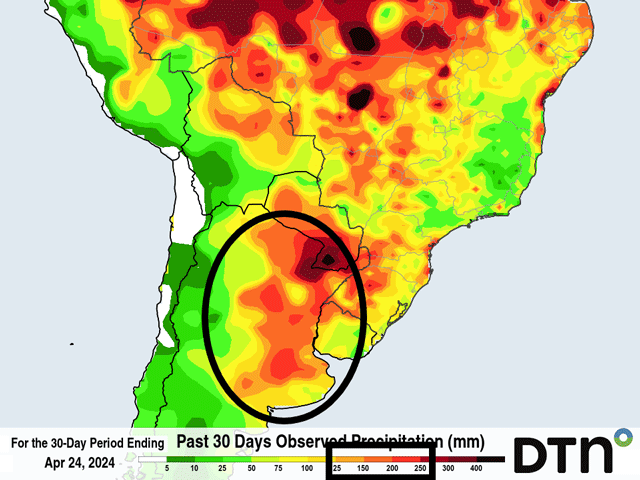
The corn and soybean crop in Argentina had looked really good for most of the growing season. But late wetness has led to issues with pests, disease, the inability for the crop to mature properly, and especially harvest.

The corn and soybean crop in Argentina had looked really good for most of the growing season. But late wetness has led to issues with pests, disease, the inability for the crop to mature properly, and especially harvest.
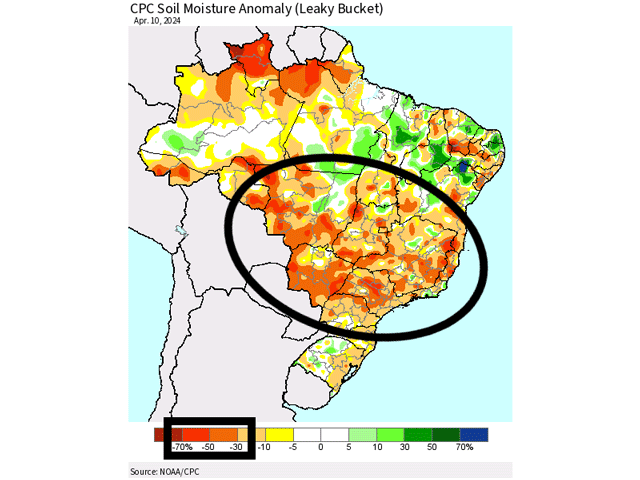
Wet season showers have effectively ended this week in most of Brazil, which puts the onus on fronts coming from Argentina to supply any excess moisture for the safrinha corn crop in central and southern Brazil. Corn conditions from here on out will be watched closely as the...

Though rainfall forecast for the next 10 to 12 days is fairly substantial, models are insisting on a cold front moving through shortly thereafter that will cause precipitation to decline over central Brazil a few weeks before the average end date of the wet season.
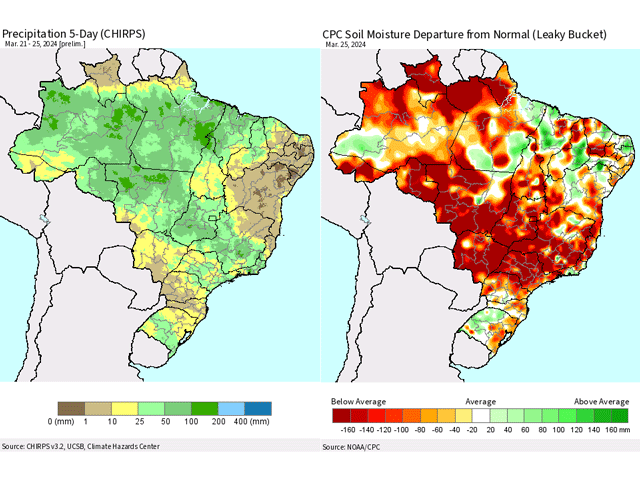
After some hefty rainfall in Central Brazil during the last several days, subsoil moisture estimates from satellite observations barely budged. More rain is in the forecast. Can this create some better moisture?
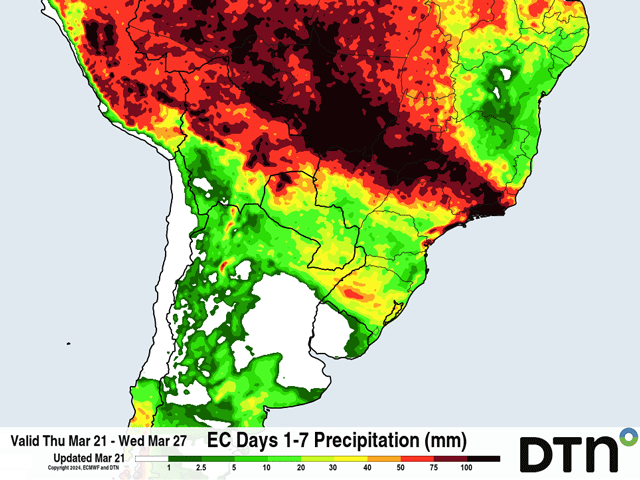
A cold front in southern Brazil will move up into central Brazil and stall out, bringing days of good showers there. But with subsoil moisture lacking significantly, will this coming rain be enough to build in enough soil moisture for the safrinha corn crop?
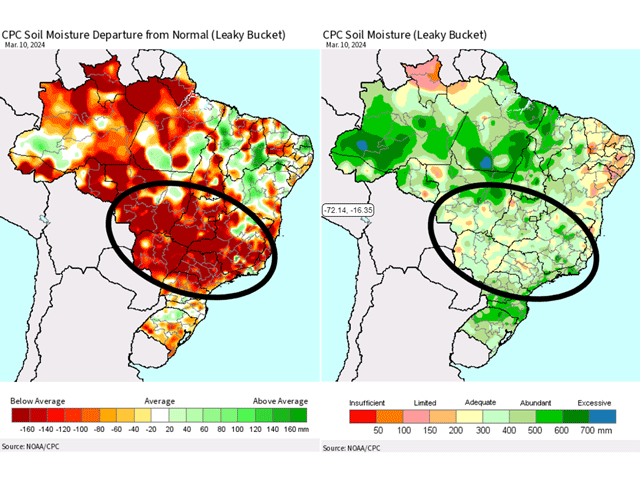
Soil moisture in Brazil continues to be well below normal. Though the actual soil moisture is adequate for early growth, the lack of subsoil moisture in most of the safrinha corn areas will not be once the wet season rains shut down.
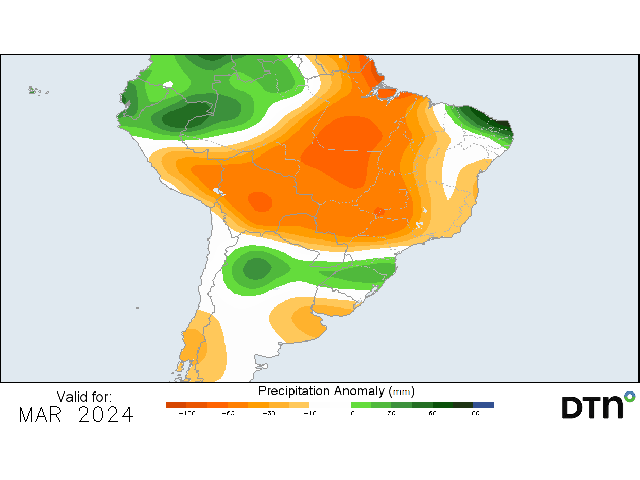
Soil moisture in Brazil is adequate in most areas for the current developing safrinha corn, but is well-below normal for this time of year. A drier March forecast is not favorable for good crop production, despite favorable conditions early in the season.
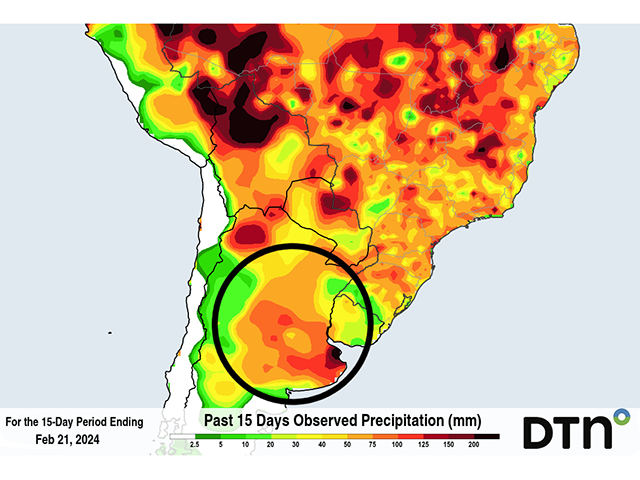
Rainfall in Argentina has turned away from its consistency during the last month and crops are just holding on.
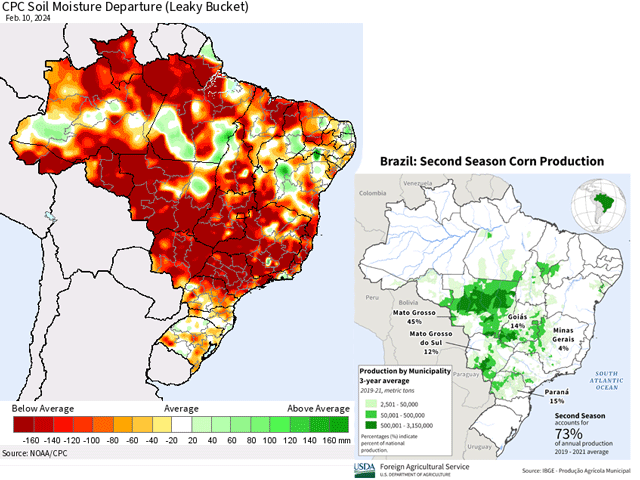
Rainfall in Brazil has been consistent, but amounts have not been up to snuff and soil moisture is behind schedule for the safrinha corn crop that is now being planted.
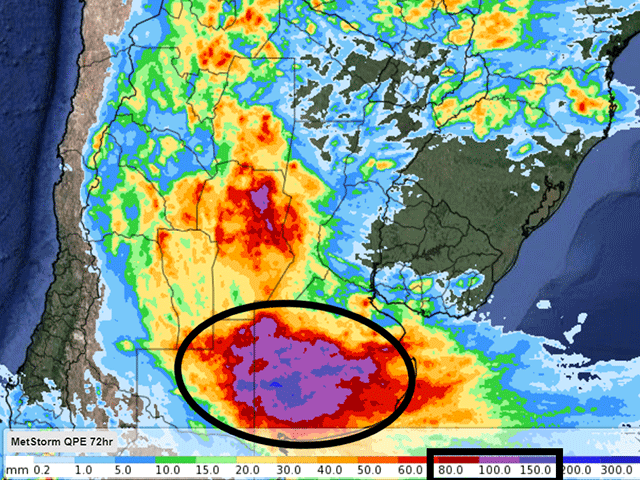
After more than two weeks of hot and dry conditions that produced a flash drought in Argentina, heavy soaking rains moving through the region will ease the stresses for corn and soybeans, which are in a critical stage of development.
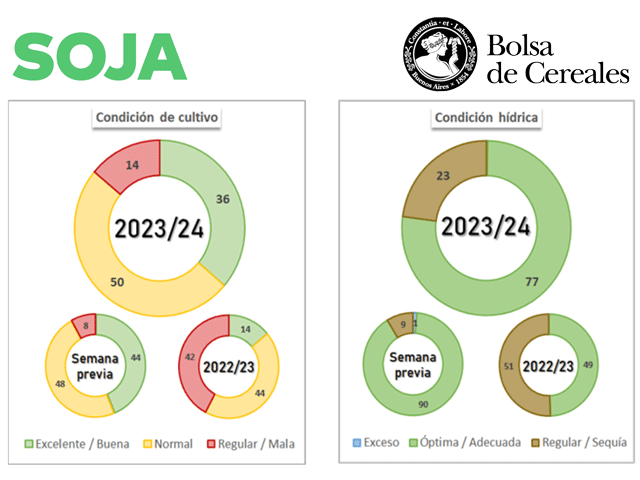
Reports from the Buenos Aires Grain Exchange point to rapidly worsening conditions in Argentina due to heat and dryness.
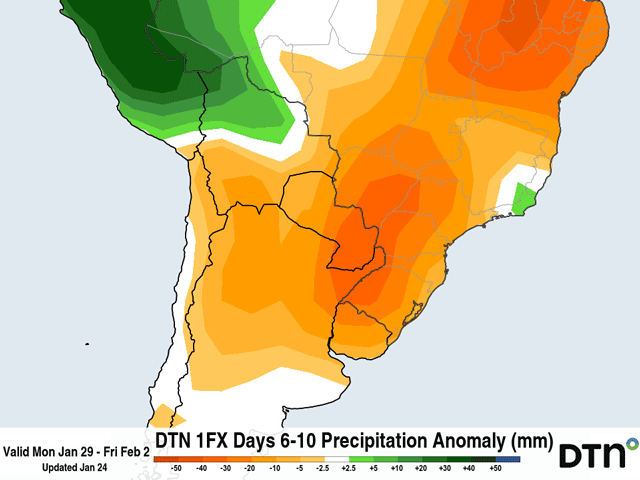
Next week's forecast rainfall across many of the main growing areas across South America calls for below-normal precipitation and drier-than-normal conditions may continue to plague Argentina.
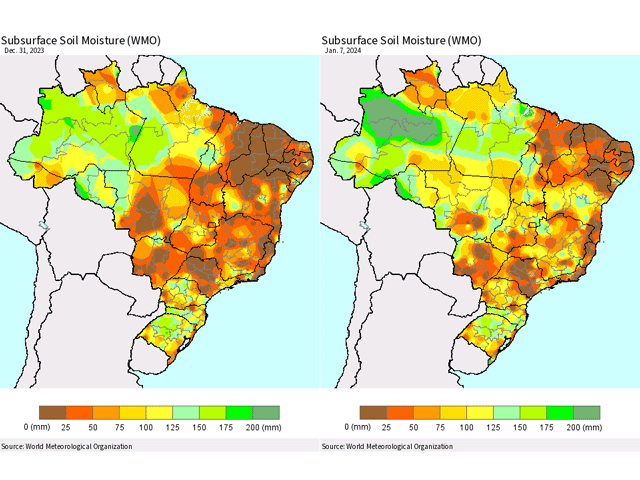
Central and northeastern Brazil saw a good amount of rainfall in early January that has helped to increase soil moisture for filling soybeans in much of the region. However, subsoil moisture levels continue to be very poor and are a threat to the safrinha corn season if...
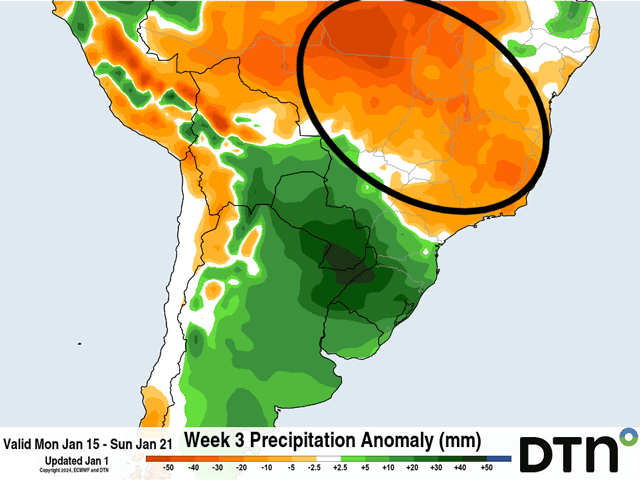
Although central Brazil is amid a stretch of heavy rainfall, the forecast for mid- to late January is much more subdued. Will it matter for the 2023-24 soybean crop?
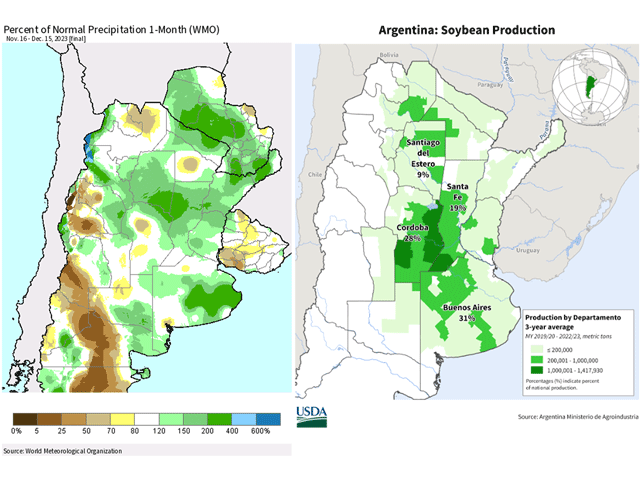
With all the discussion about Brazil and the wild swings in weather that have occurred there this growing season, Argentina continues to quietly have very good growing conditions.

Brazil's rough weather during the first half of the soybean growing season has led to concerns over production. But the second half of the season is much more favorable once the current dry stretch is over. Argentina continues to have favorable conditions and forecasts as...
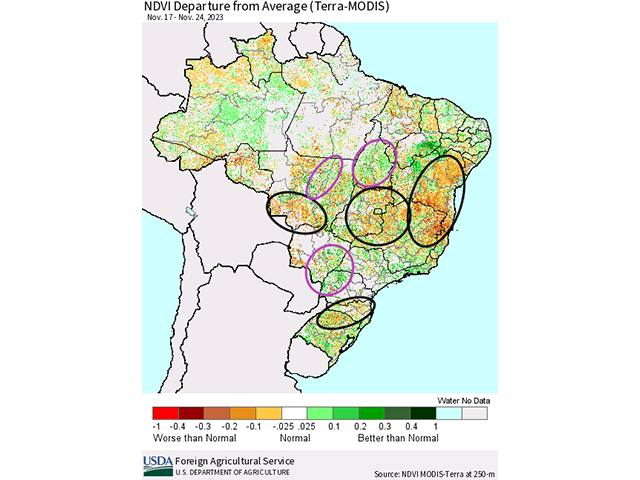
When reports from other countries are not always as complete as those in the U.S. or Canada, the use of satellites can fill in the gaps. However, using these images over places with frequent cloud cover can limit their effectiveness.
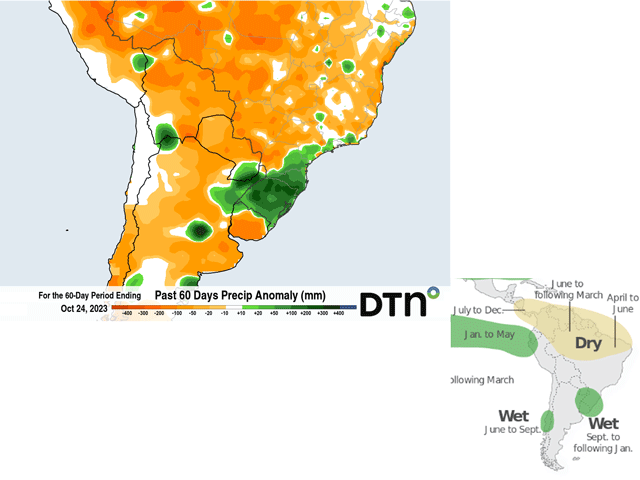
The rainfall pattern across South America has been typical of El Nino, but that has been taken to the extremes so far. Here's a closer look at what has been happening and how it has affected South American crops.
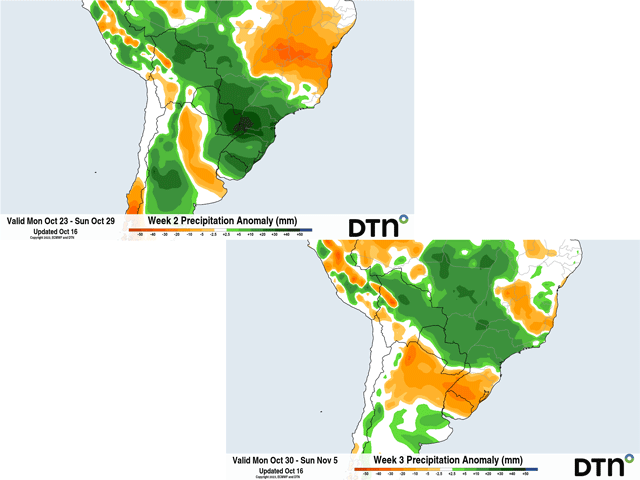
While it has been dry in the most productive areas of Brazil for the start of the wet season, there is some indication rain will increase at the end of October heading into November.
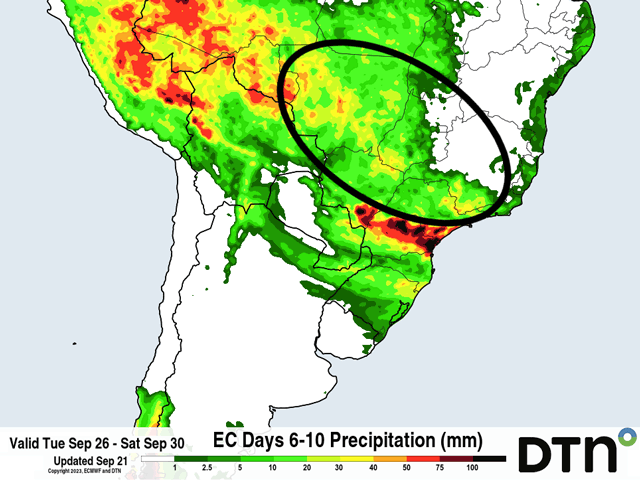
The average date for the start to the rainy or wet season in central Brazil is around Sept. 26. Are those rains going to be delayed?
DIM[2x3] LBL[blogs-south-america-calling-list] SEL[[data-native-ad-target=articleList]] IDX[2] TMPL[news] T[]
DIM[2x3] LBL[blogs-sourth-america-calling-list-2] SEL[[data-native-ad-target=articleList]] IDX[5] TMPL[news] T[]